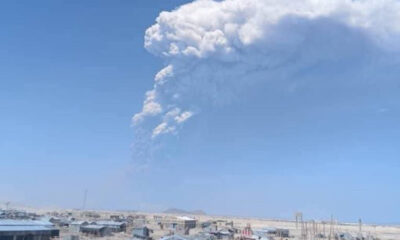Reviews
How to Handle Language and Communication in Malaysia

Traveling to Malaysia is a rewarding experience, offering vibrant cultures, incredible food, and a blend of modern cities and natural beauty. But if you’re new to the region, you might wonder how easy it is to communicate. The answer? Much easier than you think.
English is widely spoken in Kuala Lumpur and tourist-friendly areas, but knowing how to navigate multiple languages adds confidence and connection to your journey. Whether you’re ordering food or exploring local markets, staying connected with a KL eSIM can help you manage language tools on the go. Let’s explore how you can handle communication in Malaysia with ease.
Understanding Malaysia’s Multilingual Culture
Malaysia is a true cultural mosaic, and its language landscape reflects that. The country recognizes Bahasa Malaysia (Malay) as its official language, but Chinese dialects (like Mandarin and Hokkien), Tamil, and English are also commonly used.
In daily life, locals often switch between languages:
- Malay is used for signs, government services, and national broadcasts.
- English is the go-to language for business and tourism.
- Chinese and Tamil are prominent in cultural communities and neighborhoods.
Being aware of this mix helps you feel less confused when someone greets you in one language and switches to another mid-conversation.
How Common Is English in Malaysia?
English is widely spoken in Kuala Lumpur, Penang, and other major cities. Hotel staff, restaurant servers, and tour guides usually communicate comfortably in English.
You’ll also find that:
- Most menus in tourist areas include English translations.
- English is taught in schools, so younger Malaysians often speak it well.
- Road signs, public notices, and airport information are often bilingual.
However, stepping into rural towns or local night markets might present a few communication challenges. That’s where a few language tools (and smiles) come in handy.
Useful Malay Phrases to Know
Even if English gets you far, learning some basic Malay phrases can go a long way in showing respect and getting better service. Here are a few simple ones:
- Hello: Halo / Hai
- Thank you: Terima kasih
- Yes / No: Ya / Tidak
- How much?: Berapa harga?
- Where is the bathroom?: Di mana tandas?
Practice these before you travel or save them in your notes app. Locals truly appreciate the effort, even if your accent isn’t perfect.
Body Language and Nonverbal Cues Matter
In multicultural Malaysia, nonverbal communication is just as important as spoken words. Here are a few etiquette tips:
- Use your right hand when offering or receiving items. The left hand is considered impolite in traditional customs.
- A gentle smile or nod can go further than words in certain settings.
- Avoid pointing with your finger; instead, use your thumb with a closed fist if necessary.
Being mindful of these cues helps you interact more respectfully, especially in temples, rural areas, or formal environments.
Using Translation Apps and Digital Tools
When words fail, your phone can help. Translation apps like Google Translate are incredibly useful, especially when navigating food menus, asking for directions, or understanding signs.
Here’s how to make the most of digital tools:
- Use voice translation for real-time conversations.
- Download offline language packs if you’re exploring areas with limited service.
- Snap photos of signs or menus for instant translation help.
And with a KL eSIM, you can stay online without the hassle of swapping SIM cards or depending on public Wi-Fi.
Where Miscommunication Often Happens (and How to Fix It)
Even in English, things can sometimes get lost in translation. Here are a few common scenarios:
Food Orders: Local dishes might have unfamiliar ingredients. If you have allergies or dietary preferences, use a note or translation app to explain clearly.
Transport and Directions: Some taxi drivers may not speak English. Have your destination written in Malay or show it on a map app.
Markets and Shops: Bargaining is normal in some markets, but a friendly tone is key. Use gestures, write numbers, or let your calculator do the talking.
The key is patience; most locals are understanding and willing to help.
Tips for Traveling Respectfully Across Cultures
Malaysia is a place where several cultures live side by side. As a traveler, it’s important to respect the local way of life and adjust your communication style when needed.
Keep these tips in mind:
- Ask before taking photos of people or religious sites.
- Listen more than you speak in group conversations, especially with elders.
- Be open to code-switching; many locals naturally use two or three languages in one sentence.
A little cultural sensitivity makes your interactions smoother and more enriching.
Conclusion: Speak Less, Connect More
Communication in Malaysia is more about connection than perfect words. With a little effort in learning local phrases, observing body language, and using digital tools smartly, you’ll find that most barriers melt away.
Having a KL eSIM ensures you’re never out of reach when you need language help or navigation support on the go. Whether you’re in a street market or at a hillside temple, you’ll always feel just a bit more prepared.
In the end, it’s not about speaking perfectly, it’s about listening, smiling, and showing respect. Malaysia makes it easy to do just that.

-

 World1 week ago
World1 week agoEthiopian volcano erupts for first time in thousands of years
-

 Health2 days ago
Health2 days ago8 kittens die of H5N1 bird flu in the Netherlands
-

 Legal7 days ago
Legal7 days agoUtah Amber Alert: Jessika Francisco abducted by sex offender in Ogden
-

 US News6 days ago
US News6 days agoExplosion destroys home in Oakland, Maine; at least 1 injured
-

 Health7 days ago
Health7 days agoMexico’s September human bird flu case confirmed as H5N2
-

 Legal3 days ago
Legal3 days ago15 people shot, 4 killed, at birthday party in Stockton, California
-

 World7 days ago
World7 days agoWoman killed, man seriously injured in shark attack on Australia’s NSW coast
-

 Health6 days ago
Health6 days agoMarburg outbreak in Ethiopia rises to 12 cases and 8 deaths




